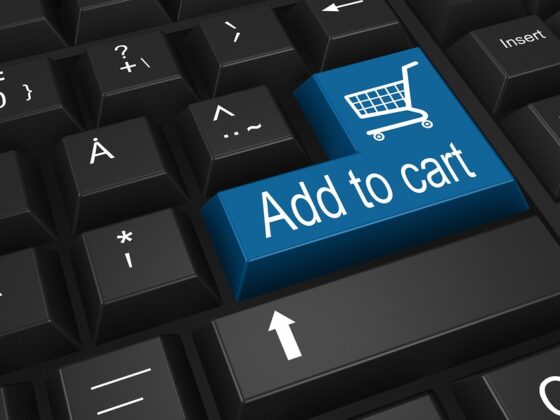When it comes to creating an online store, entrepreneurs have an array of options to choose from. Two popular e-commerce platforms that often come up in discussions are Shopify and Etsy. Both platforms offer unique features and cater to different types of businesses. In this article, we will compare Shopify and Etsy in terms of pricing, features, customization, and more, to help you make an informed decision about which platform is the best fit for your business.
Shopify: Building Your Own Online Store
Shopify is an e-commerce website builder that allows users to create their own independent online stores. With Shopify, you have the flexibility to design and customize your storefront according to your brand’s aesthetics. This means you can create a unique and personalized shopping experience for your customers.
Pricing
Shopify offers various pricing plans to cater to different business needs. The Basic plan starts at $29 per month when billed annually. This plan includes all the essential features to get your online store up and running. For higher volume sellers, there are more advanced plans available, such as the Shopify plan for $79 per month and the Advanced plan for $299 per month. It’s important to note that Shopify also offers a 14-day free trial, allowing you to test the platform before committing to a subscription.
Transaction Fees
One of the advantages of using Shopify is its lower transaction fees compared to Etsy. If you use Shopify Payments as your payment processor, transaction fees range from 2.9% to 2.4% depending on your pricing plan. Additionally, there is a flat fee of 30 cents per transaction. However, if you choose to use a third-party payment processor, Shopify charges an additional transaction fee ranging from 2% to 0.5%.
Customization and Design
One of the key strengths of Shopify is its robust customization options. With Shopify, you have complete control over the design and layout of your online store. You can choose from a wide range of themes and templates, or even create your own using Shopify’s drag-and-drop website builder. This allows you to create a visually appealing and unique storefront that aligns with your brand identity.
Integrations and Add-ons
Shopify offers a wide range of integrations and add-ons to enhance the functionality of your online store. Through Shopify’s App Store, you can find and install various apps that integrate with other services such as marketing, customer service, and analytics. This allows you to customize and expand the capabilities of your store based on your specific needs.
Etsy: A Marketplace for Handmade Goods
Unlike Shopify, Etsy is primarily a marketplace where sellers can list and sell their products. It is known for its focus on handmade goods, vintage items, and unique crafts. If you are a hobbyist or a small business selling niche products, Etsy may be an ideal platform for you.
Pricing
Etsy offers a range of pricing options to accommodate different types of sellers. The standard plan is free, allowing sellers to create a shop and list their products without any monthly subscription fee. However, there are transaction fees and listing fees associated with selling on Etsy.
Transaction Fees
Etsy charges a transaction fee of 5% of the listing price for each sale. Additionally, there is a payment processing fee of 3% plus 25 cents per transaction for sellers based in the United States. It’s important to note that Etsy also charges a listing fee of 20 cents per product upload, which is required to make the product available in your store. These fees can add up, especially for sellers who have a high volume of sales.
Storefront Design
Unlike Shopify, Etsy does not allow sellers to create their own independent websites. Instead, sellers have a storefront within the Etsy marketplace. While Etsy provides some customization options such as adding banners and icons, the overall design and layout of the storefront are limited. However, Etsy does offer a separate service called Etsy Pattern, which allows sellers to create their own website with a unique domain name. Keep in mind that Etsy Pattern comes with additional monthly hosting fees.
Audience and Brand Exposure
One of the major benefits of selling on Etsy is the built-in audience for handmade goods and unique crafts. Etsy has a dedicated customer base that actively seeks out these types of products. By listing your products on Etsy, you can tap into this ready-made audience and gain exposure for your brand. This can be particularly beneficial for small businesses or hobbyists who may not have an established customer base or online marketing resources.
Customer Support
Both Shopify and Etsy offer customer support, but the level of support may vary. Shopify provides 24/7 customer support through various channels such as chat, email, and phone. On the other hand, Etsy’s customer support may require navigating through its customer service tree to access phone support. Most inquiries are handled through email, with response times ranging from two to five business days.
Conclusion: Choosing the Right Platform for Your Business
When deciding between Shopify and Etsy, it ultimately depends on your specific business needs and goals. Shopify is a great option for businesses that want to build their own independent online stores and have more control over customization and design. It is particularly suitable for high-volume sellers and those who already have an established customer base.
Etsy, on the other hand, is a marketplace that caters to sellers of handmade goods and unique crafts. It offers a built-in audience and exposure for businesses in these niches. Etsy can be a good choice for hobbyists, small businesses, or those who want to test the market without the upfront investment of building their own website.
Ultimately, the decision between Shopify and Etsy should be based on your specific business model, target audience, and long-term goals. It is worth considering your budget, scalability, customization requirements, and the type of products you sell when making your decision. Remember to take advantage of free trials and explore the features and functionalities of each platform before making a commitment.


